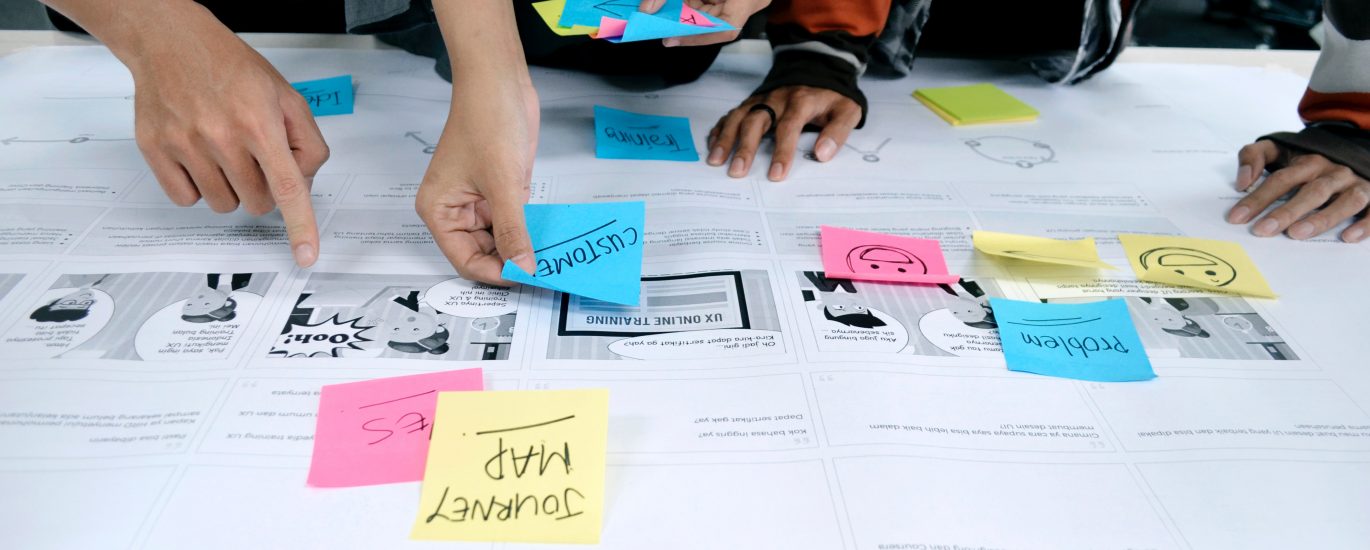Project managers play critical roles within organizations, constantly going above and beyond to plan, execute, and deliver on critical projects that propel a company forward, all while working under the constraints of strict budgets and time constraints.
A good project manager makes successful project delivery appear effortless, but creating and executing an effective project is not always easy.
Enter design thinking, a problem-solving method that allows project managers to explore an entirely new realm of innovative solutions.
There is no denying the success that a project manager can achieve by incorporating design thinking into their project design. It is unrivaled in problem-solving for effective project management because it is centered on creative and user-centric solutions. Project managers can gain better direction for their projects and deliver exceptional results for their users and stakeholders by following the steps and methodologies of design thinking.
Let’s take a closer look at the stages of design thinking and the various methods for incorporating design thinking into project design.
Project Management Using Design Thinking
The concept of design thinking is straightforward at its core. Design thinking is a structured problem-solving method that consists of three stages: collaboration, innovation, and acceleration.
This framework helps project managers gain a better understanding of their end-users, allowing them to develop insight and direction for the task at hand. Effective project management via project design is critical to providing the best value possible.
Design Thinking’s 5 Steps
There are five design thinking steps to employ in effective project management:
1. Feelings
As a user-centric problem-solving framework, it’s only natural that the first step of design thinking is to better understand your user. Learn about their demographic, recognize their needs, and comprehend their desires and goals. Conduct research and interviews to identify the issue and gain a thorough understanding of what the ideal solution for the user would entail.
2. Specify
“If I had an hour to solve a problem, I’d spend 55 minutes thinking about the problem and five minutes thinking about solutions,” Albert Einstein once said. The defined phase of design thinking requires project managers to do exactly that. Reflect on your observations from phase one to develop a simple problem statement. This will give your workflow direction and serve as a solid foundation for stage three.
3. Create an idea
You are aware of the issue and are aware of your users’ requirements. It is now time to take action. Brainstorm a variety of potential solutions to the problem at hand that will benefit the defined users. Encourage creativity in order to generate a wide range of possible outcomes. The ability to foster innovation through ideation is essential for effective project management.
4. Create a prototype
Once you’ve determined the most effective solution, put your theories into action through prototyping. Depending on the problem, prototyping may look like storyboards or sketches, or it may look more like the finished product in the form of a 3D model. Because the goal of prototyping is to test your solution, keep your problem statement in mind as you design your prototype.

5. Run a test
Through design thinking, testing is a critical component of effective project management. To accurately measure a project’s success and ensure that the product or service is ready for market, testing must be performed to ensure that it provides a solution to the problem at hand as well as a flawless user experience. Test it with actual end-users to ensure that it meets their expectations. If the testing phase fails, the team must return to an earlier stage and repeat the process until the problem statement is solved with a satisfactory outcome.
Using Design Thinking Methodologies to Improve Project Management
Understanding the stages of design thinking provides a solid foundation for effective project management, but how do we put design thinking into practice?
Design thinking will not always look the same in your organization’s operations. In fact, a project manager can use a variety of design thinking techniques to improve their workflow and exceed expectations.
Here are a few examples of design thinking methodologies that are commonly used in project design:
Poster Concept
A concept poster is a useful tool for summarizing an idea through graphics, summaries, sketches, and timelines. It is commonly used to pitch solutions. It can explain to stakeholders why a project is needed, how it will be completed, and why it is important to the end-user.
User Journey Diagram
Understanding a user’s journey can be difficult. A user journey map is a step-by-step visual representation of a user’s experience with a product or service that is deployed. With a visual representation of the user’s flow, it is simple to identify and address specific pain points along the journey.
Clustering Based on Affinity
Affinity clustering can sort items based on similarities using a visual diagram. Sorting is commonly done with sticky notes, whiteboards, or chalkboards. Affinity clustering in design thinking can help identify common patterns and major problems that need to be addressed to improve the customer experience.
The complexity of Importance/Difficulty
This quad chart assists project managers and their teams in establishing priorities and making sound decisions. You can effectively develop an action plan based on the weighted value of each task by plotting priorities based on their importance and difficulty.
Test Your Thoughts Aloud
To identify gaps in processes, think-aloud testing is an effective design thinking tool. Think aloud testing asks users to describe what they’re doing, thinking, and feeling as they complete a task, providing project managers with insight into user expectations and issues within the user’s journey.
Begin Using Design Thinking Today
Do you want to learn how to put techniques for defining market fit and growing your business into action?
Enroll in Simplilearn’s Post Graduate Program in Project Management or the Design Thinking Certification Training Course to learn how to master the concepts of design thinking, a robust problem-solving process that requires a thorough understanding of customer needs. Improve your understanding of business strategy in order to drive innovation and a culture of design thinking in your organization.





